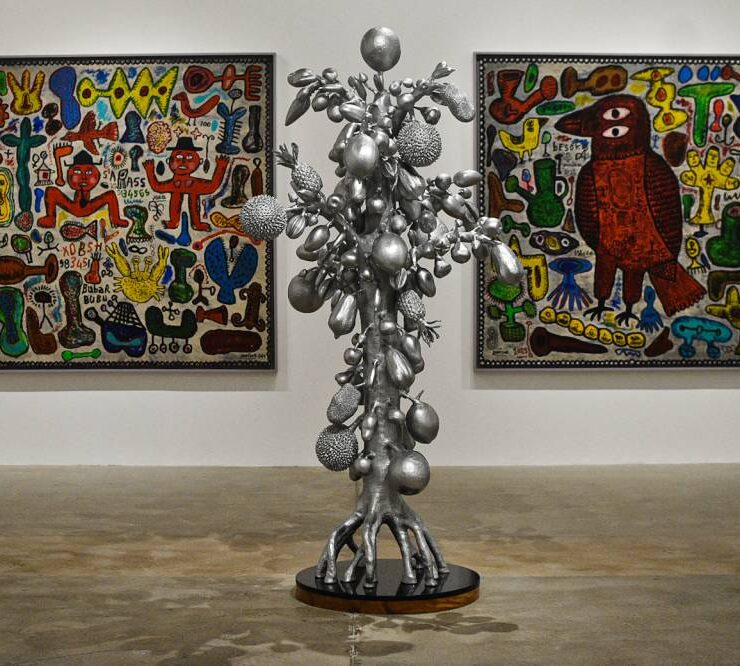6 types of grief that no one talks about

When it comes to grief, the first thing on our mind is the biological loss of family members. We associate grief with death—the mourning of loved ones and the wake of three to seven days to say our goodbyes. But grief doesn’t have to be confined to funerals or cemeteries. There are many faces of grief yet not all of them are treated with the same emotional depth.
The depth of our grief depends on the personal connection, the current stage of our lives, and the time spent with what was lost. We can grieve the loss of our loved ones, relationships, childhood, pets, and even favorite bands—anyone and anything with which we develop a sense of closeness and yearning.
Love reflects on our grief, and it exemplifies the transformation of that love in the face of loss. However, the emotional investment and the struggles in accepting the loss are further afflicted by how others perceive our grief.
Ultimately, grief is not a hierarchy. There is no such thing as a “trivial” grief. Any loss is a valid loss, especially to the person grieving. With that, here are the following kinds of grief that deserve as much recognition as “normal grief.”
Disenfranchised grief, the loss that shall not be named
A loss without open acknowledgment or social validation is present in experiences that others can easily dismiss. It can be a miscarriage, the death of a beloved pet, or the end of a special relationship.
It is difficult to mourn these losses because each one is so deeply personal.
When grieving, no one else may truly understand how you feel inside, which is why most of us turn to emotional isolation and grieve on our own. But grief is even more heartbreaking without being able to turn to anyone for support, let alone being able to openly grieve about it.
Disenfranchised grief also aligns with mourning the national state of affairs—the corruption in the Philippines and the injustices we witness every day. While many Filipinos grieve for the current events in the country, some respond to this frustration in a dismissive manner: “Ganyan talaga. That is just politics.”
That, too, is a form of loss—the lost hope and trust in the leaders meant to protect us.
Anticipatory grief, the loss you can foresee
We cannot deny that love paves the way to impending grief. Even so, life is lived through love, not avoiding it. When it comes to anticipatory grief, the loss emerges even in the happiest of moments. Here, a person anticipates grief with the underlying knowledge that the loss will eventually happen.
Anticipatory grief occurs in the slow but ever-rising changes that build up over time. You may watch your parents and relatives grow old or notice your pets’ slower gait. You may find yourself spending more time with them, wanting to be closer to them because you’re expecting the inevitable.
Still, anticipatory grief does not teach us to fear the future with impending loss. It reminds us to make the most of the time we have left with loved ones.
Secondary grief, the loss that follows another
The aftermath of a primary loss can cause other aspects of a person’s life to crumble. Like a chain reaction, secondary grief follows. In the middle of loss, we can begin to lose a sense of identity, further afflicted by isolation from loved ones and community.
And in more extreme cases, it can impact financial stability, diverting time and energy away from a person’s ability to grieve properly.
Filipinos are known for resilience, but that label can sometimes silence pain. In romanticizing resilience, we unintentionally downplay our own grief. This should not be the answer to true healing in the long term because, in reality, we should acknowledge the pain we endure through loss.
Ambiguous grief, the loss with no clear ending
This type of grief is felt when you lose people who are still very much alive. It comes with uncertainty and nonexistent closure. The loss can come from loved ones with dementia who can no longer recognize you (alive, but psychologically absent) or someone who ghosted you and left you blindsided (physically gone, but psychologically present).
Without funerals to mourn the loss, it is confusing and isolating—a grief “frozen” in time.
In a culture that values pakikisama (social harmony), many Filipinos quietly endure ambiguous grief, opting to avoid conflict rather than confront it. As Josiah Go puts it, “Silence is complicity,” and silence only aggravates a person’s grieving process.
Traumatic grief, the loss that yields scars
Here, grief can arise from a sudden and violent loss—losing someone to an accident, calamity, or a criminal act. For every Filipino who endures natural disasters and injustices with deficient protection, they often carry hidden wounds and scars they can rarely talk about.
This grief is sudden and unexpected—leaving little time to prepare and process who has been lost.
Traumatic grief carries such an intensity for anyone who has witnessed or undergone a traumatizing event. It needs equal compassion and professional attention.
Absent grief, the loss that leaves you empty inside
Crying is a natural reaction to grief—but so is numbness and “feeling nothing.” And as much as grief manifests in tears and overwhelming sadness, an emotional shutdown is also an expression of grief—known as absent grief.
But showing little to no outward signs of grief is perceived as abnormal because it is expected for one to explicitly show grief: openly bawling over the loss of a loved one, crying, and seeking support from loved ones. In that sense, emotional numbness can be our body’s reaction to grief, as we disconnect from the overwhelming reality and process the loss.
We must understand that we all grieve differently. While it is possible to be misunderstood by others, understanding the validity of our grief can allow us the compassion we deserve to cope with the loss, whatever form our grief takes.





















